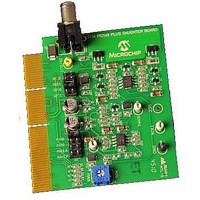AC164142 Microchip Technology, AC164142 Datasheet - Page 24

AC164142
Manufacturer Part Number
AC164142
Description
Consumer-band BPSK 7.2kbps PLM PICtail Plus Daughter Board Other
Manufacturer
Microchip Technology
Series
PICtail™ Plusr
Specifications of AC164142
Kit Application Type
Communication
Silicon Family Name
DsPIC
Kit Contents
2x Power-Line Soft-Modem PICtail Plus Daughter Boards, 2x High Voltage Adapter Cables, Info Sheet
Features
Operates On 5V And 9V
Rohs Compliant
Yes
Processor To Be Evaluated
dsPIC33F
Processor Series
dsPIC33F
Operating Supply Voltage
5 V, 9 V
Featured Product
AC164142 PICtail⢠Plus Daughter Board
Main Purpose
Interface, Power Line Transceiver
Embedded
No
Utilized Ic / Part
-
Primary Attributes
AC Power Line Transceiver, BPSK 7.2 Kbps
Secondary Attributes
Requires Explorer 16 Boards
Lead Free Status / Rohs Status
Lead free / RoHS Compliant
Available stocks
Company
Part Number
Manufacturer
Quantity
Price
Company:
Part Number:
AC164142
Manufacturer:
MICROCHIP
Quantity:
12 000
Part Number:
AC164142
Manufacturer:
BOARD
Quantity:
20 000
Consumer-band BPSK 7.2 kbps PLM PICtail™ Plus Daughter Board User’s Guide
DS70656A-page 24
The memory and MIPS requirements for the modem software for different baud rates
(with DMA and RAM-saving options enabled) are listed in
TABLE 3-1:
3.1.6
An application template has been provided to ease the development of customized
PLM applications. The application template can be downloaded from the
Consumer-band BPSK 7.2 kbps PLM PICtail Plus Daughter Board web site at:
www.microchip.com/powerline.
By default, the software for the daughter board is designed to operate on a carrier
frequency of 129.6 kHz. However, if required, the software can be modified to operate
at a different carrier frequency. In this case, the following need to be taken into
consideration:
• The hardware provided in the kit is designed to operate at a carrier frequency of
• It is necessary for the carrier frequency to be an integral multiple of the baud rate:
• Lower carrier frequencies result in lower maximum possible data rates
• Carrier frequency or baud rate changes outside the combinations provided in the
• Increasing carrier frequency increases the MIPS requirement for the modem soft-
129.6 kHz. Changing the carrier frequency in software will require modifications to
the hardware components, specifically the components that decide the filter cutoff
frequencies
Carrier frequency, F
include file (
digital filter coefficients
ware. For this reason, the carrier frequency must be well within the CPU’s useful
performance limit. The modem software requires approximately 0.234 to 0.303
MIPS/kHz of carrier frequency
Baud Rate
1200
2400
3600
4800
5400
7200
Developing Custom Applications
...\modem\bpsk\bpsk_filter.inc
MEMORY AND MIPS REQUIREMENTS FOR THE MODEM
C
= k * baud, k
RAM (Bytes)
700
412
316
268
252
220
ϵ
Integer
Flash (Bytes)
) will require recalculation of
2709
2709
2709
2709
2709
2709
Table 3-1
© 2011 Microchip Technology Inc.
MIPS
33.5
33.6
33.7
33.9
33.9
34.1












